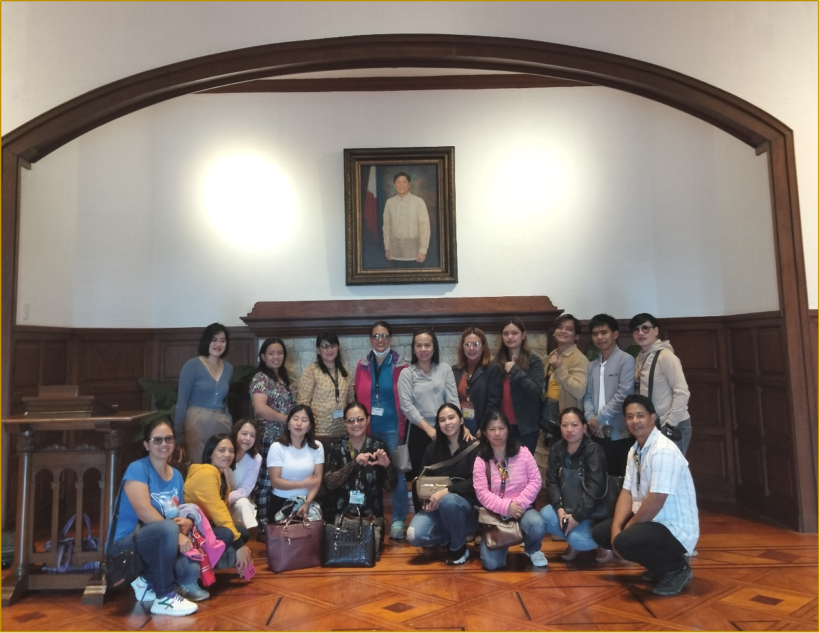by Josefa Dampilag and Genevieve Balance Kupang
On September 14, 2024, the doctoral students of Baguio Central University’s (BCU) ‘Current Trends, Problems, Innovations in Graduate Education’ class embarked on an educational trip to The Baguio Mansion House-Presidential Museum (TBMH-PM). This newly opened museum, rich in history and culture, offered an enriching experience as the students delved into the legacies of past Philippine presidents. This activity aligns with SDG 4: Quality Education, specifically Target 4.7, which aims to ensure that all learners acquire the knowledge and skills necessary for sustainable development, including through global citizenship education.
Welcomed by knowledgeable and amiable tour guides, the group enjoyed an insightful exploration of the exhibits, which sparked profound reflections on leadership and national service. One of the captivating aspects was the collection of memorabilia and artifacts. These items provided a unique and intimate glimpse into the lives of the nation’s presidents, showcasing the highlights of their achievements, a glimpse of their personal journeys, and leadership styles. The students were fascinated by the historical timelines on display, which chronicled key events and milestones of each presidency. These timelines also drew connections to events unfolding in other parts of the world that had a direct impact on the country. This global context added depth to the understanding of the Philippines’ role on the world stage. Complementing this experience were the breathtaking artworks and paintings, some of which had been transferred from Malacañang Palace, further reinforcing the cultural and historical significance of the museum as a repository of national heritage.
This visit also contributes to SDG 11: Sustainable Cities and Communities, particularly Target 11.4, which seeks to strengthen efforts to protect and safeguard cultural and natural heritage. The museum’s preservation of historical and cultural artifacts promotes a sense of place, identity, and belonging among the community.

The first group of BCU’s doctoral students outside TBMH-PM, captured in front of its iconic landmark.
The visit stirred meaningful reflections among the doctoral students. Many expressed admiration for the resilience of presidents, three of whom rose from humble beginnings to lead the nation. The role of first ladies was also highlighted, with students recognizing their contributions not only as supportive partners but as champions of socio-cultural-health causes. The experience offered a profound reminder of the complexities and challenges of leadership, leaving the students with a renewed appreciation for those who have shaped the nation.
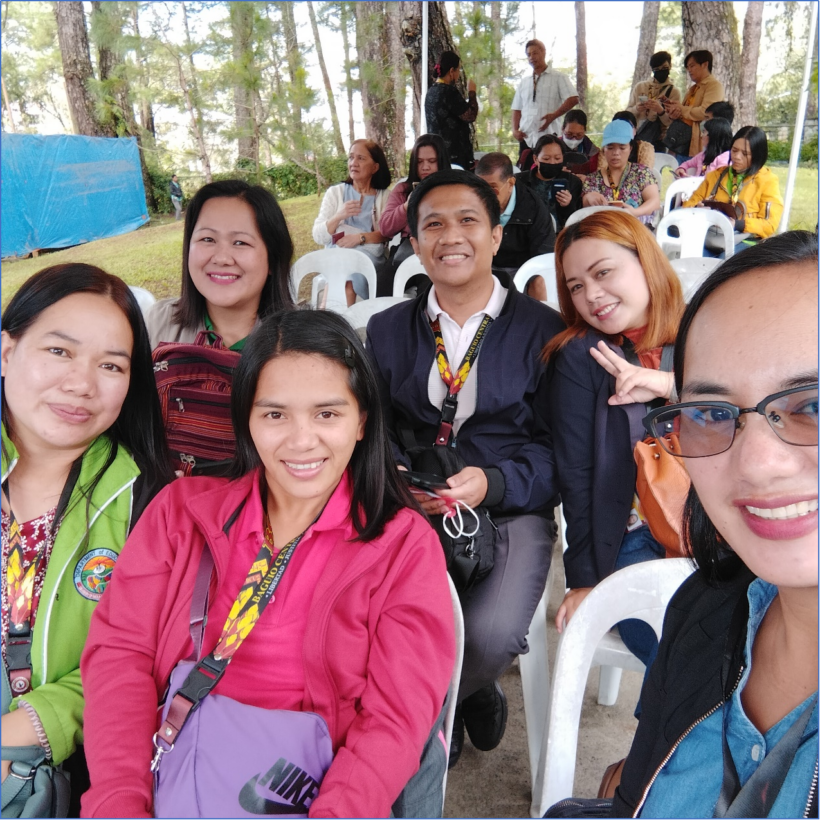
Smiles of excitement as we eagerly await our scheduled entry into the museum.
For the doctoral students, who are leaders and educators, the visit underscored the importance of understanding the historical evolution of Philippine leadership. It emphasized the role of education in shaping leaders and nation-builders, and the significance of preserving historical landmarks and artifacts for future generations. The experience also encouraged the students to think about innovative approaches to teaching history and civics, fostering a deeper connection to national identity among their learners. The members of the class are Yolanda Angcuan, Satur Jr. Bacdayan, Jhayra Bayacsan, Cesaria Joy Bay-eng, Helen Buyagan, Josefa Dampilag, Anderson Dawigi, Rizalina Dulagan, Junifer Felix, Elizabeth Lagawid, Mark Libio, Emily Libod, Margie Lumyaen, Christine Luyosen, Jocelyn Mero, Esther Rizaldo, Rhodaline Sugui, Fe Togmey, Prima Tolingan, Shyla Tugay-an, Victoriano Marvin, Alaska Turaray, Jonathan Lagan, Pacita Gawaen, and Edgar Sapigao.
After the visit, Dr. Kupang led a thoughtful debriefing session with the class, encouraging students to reflect on their experience with a series of insightful questions. She began by asking, “What was the coolest, most interesting, or surprising thing you learned today?” This prompted students to share their newfound discoveries and personal highlights from the visit. She then posed a more introspective question: “If you could ask one of the historical figures featured in the museum a question, what would you ask them and why?” This invited the students to engage more deeply with the historical narratives and consider the motivations and challenges of the nation’s leaders. Another key question was, “How did visiting the museum change your perspective on the time period or topic it covers?” This allowed students to express how the visit shifted their understanding of the historical events and figures they had studied. Finally, she concluded with, “What were your key takeaways and valuable insights from the visit?” encouraging the class to distill their reflections into meaningful lessons and insights that would inform their roles as future educators and leaders. The skillful facilitation fostered a rich exchange of ideas, leaving the students with a deeper appreciation of history and its relevance to contemporary leadership and education.

Dr. Genevieve Kupang, BCU professor of Current Trends in the Graduate School who spearheaded the class visit to TBMH-PM.
Here are some of students’ answers to questions as they reflected about interesting trivias in the museum, the challenges of governance, and how to bridge the gap between the government and the people to foster trust and collaboration.
“In my 39 years, I only recently learned that former President Fidel V. Ramos was not Catholic. Despite this, he wholeheartedly supported Pope John Paul II’s visit to our country during his administration. This demonstrated that, regardless of religious differences, unity is possible — a reminder that makes me proud to be Filipino.“ – Josefa P. Dampilag
“The visit to the Baguio Mansion Presidential Museum was truly a trip down memory lane, spanning over a hundred years of leadership among Philippine Presidents. Each administration faced its own set of challenges, to which they devoted their strengths, carrying the Filipino people on their shoulders. The wealth of their experiences and responses to these challenges offers invaluable lessons for future leaders in our country. As a student of Current Trends in Graduate Education, I found the experience enriching. Hearing about the obstacles each president had to overcome highlighted the strength of character required to lead, as well as the importance of openness to innovation and new possibilities as hallmarks of true leadership.” – Alaska Javier Turaray
“Visiting the Presidential Museum in Baguio City, Philippines, for the first time was an enriching experience that filled me with pride. The initiative to open this museum to the public reflects the commitment of both the organizers and the government to educate citizens about the rich history and significant accomplishments of our presidents. The museum not only highlights the achievements of our leaders but also showcases their contributions to the nation, making it a vital resource for understanding our country’s heritage.
As a Filipino citizen, I found the one-hour tour incredibly worthwhile. The displays and presentations by the knowledgeable tour guides revealed insights and historical facts that I had not encountered in my history classes. For instance, I learned about the original design of the Philippine flag, which featured petal-shaped rays of the sun—details that have since evolved into the design we recognize today. Such discoveries deepen our appreciation for the symbols of our nation and the stories behind them.
I would like to express my gratitude to Dr. Genevieve B. Kupang, the Dean of the Graduate School and my professor in Current Trends, Problems, Innovations in Graduate Education, for facilitating this visit. Her initiative underscores the belief that learning extends beyond the classroom walls of Baguio Central University (BCU). The museum serves as a powerful reminder that education can occur in various settings, especially in places that offer new perspectives and insights, such as this museum.
In conclusion, my visit to the Presidential Museum was not just an educational outing; it was a journey through our nation’s history that fostered a sense of pride and connection to our past. I encourage everyone to explore such cultural institutions, as they play a crucial role in shaping our understanding of the Philippines and its leaders.” – Fe M. Togmey, PHAS 1 Student
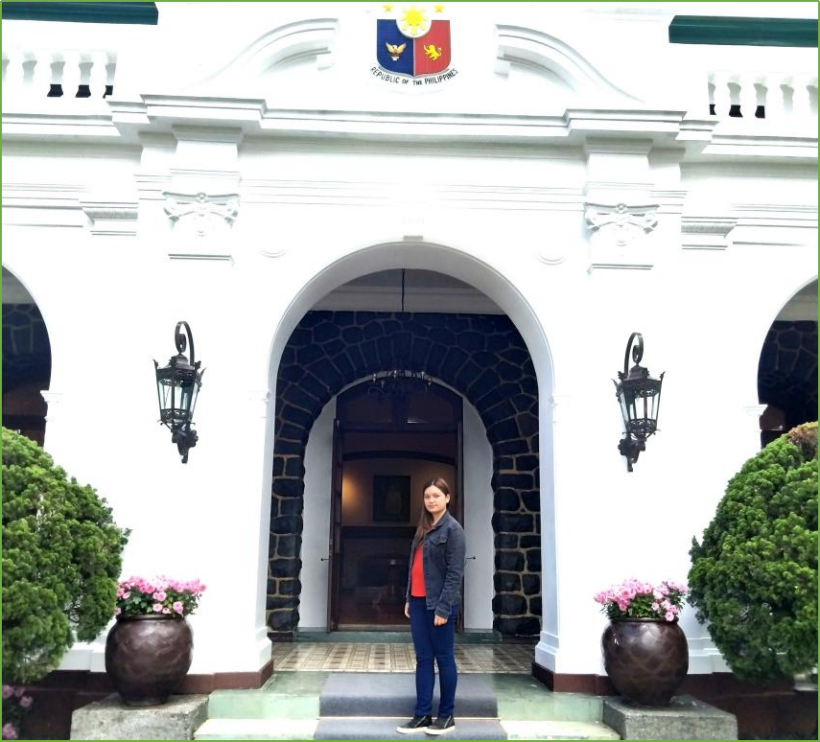
Christine Luyosen, our dedicated class officer, stands proudly in front of The Baguio Mansion House-Presidential Museum. Thanks to her meticulous coordination, our educational trip was a seamless and enriching experience.
More than just an educational outing, this was a profound experience that allowed the students to connect with the nation’s rich history. Inspired by the lives of past leaders, they gained valuable insights into the challenges and triumphs of governance. The experience also served as a powerful motivation for their own contributions to education and society.
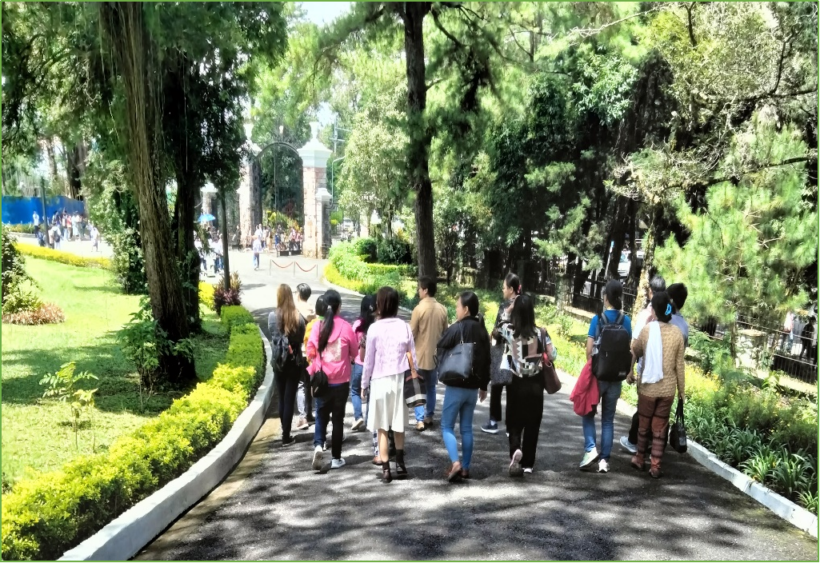
As we exited the museum, we left with valuable lessons, enriched knowledge, and a renewed sense of aspiration.
#Culturalandhistoricalheritage
#BaguioCentralUniversity
#TheBaguioMansionHousePresidentialMuseum
About the Authors:
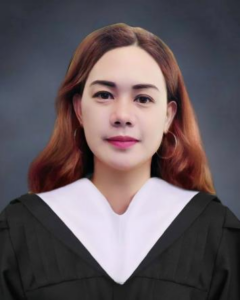
Josefa P. Dampilag is a committed public servant at the Department of Environment and Natural Resources (DENR). As the Unit Chief under the Regulation and Permitting Section of the Provincial Environment and Natural Resources Office, Benguet, she led the Patent/Titling and Processing Issuance for the province, including Baguio City. Her efforts earned her a Certificate of Appreciation from the Baguio City Police Office, alongside recognition from the Mayor and city council members, for her invaluable contribution in facilitating special patents for government offices in Baguio City. Dedicated to public service, she strives to bring government services closer to the people.
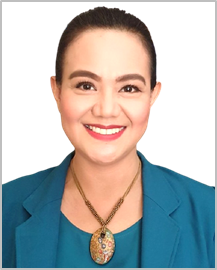
Genevieve B. Kupang is a professor and the Dean of the Graduate School at Baguio Central University. As BCU’s Representative for Internationalization, she plays a role in fostering partnerships and advancing the university’s international presence. She is a Board of Director of the Cordillera Association of International Relations Officers (CAIRO). She serves on the leadership and selection committee for the Exceptional Women of Peace Awards at Pathways to Peace, a UN Peace Messenger organization. She is committed to excellence in education, international relations, and the promotion of peace and empowerment.


